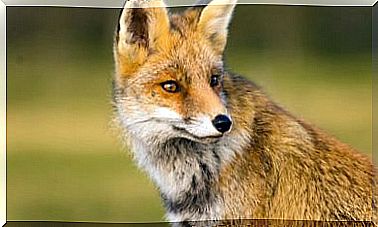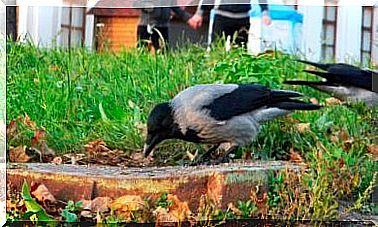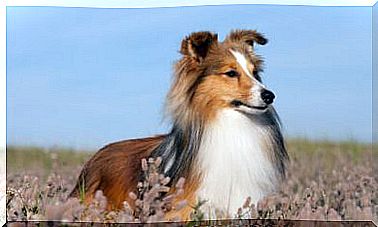The Dog’s Nose: 6 Trivia
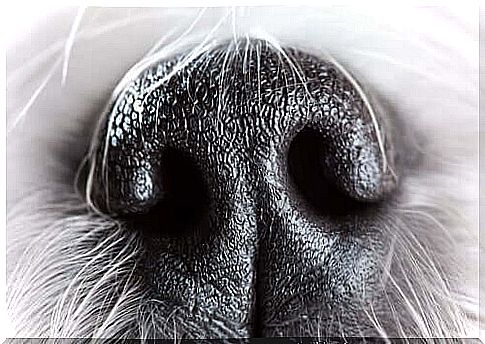
The dog’s nose is actually a powerful device that guides him through a world very different from the one we can perceive. No doubt, it’s difficult for humans to fully understand the enormous power of the canine sense of smell.
What’s behind this amazing ability? Seeking to answer this question, scientists decided to elucidate the physiology of canine smell. In this article, we’ll discuss some of the most relevant findings.
1. It is a multifunctional body
The air that reaches the dog’s nose is distributed so that two functions take place. One part is for smell and the other for breathing: a dog’s nose has the ability to separate air.
One part goes directly to an olfactory detection chamber that distinguishes odors, while the other goes to the trachea and is dedicated to breathing. Olfactory detection occurs when air forms eddies that circulate through a system of turbines, where the olfactory receptors are located. In dogs, the turbine system is much more complex than in humans.
The dog’s turbine system assumes a dedicated area for smell of about 100 square centimeters, an area much larger than the estimated five square centimeters in humans.
Thus, the olfactory function and acuity of dogs may depend on the flux and permanence of odor molecules until the so-called olfactory recess. There, odor receptors are exposed to prolonged contact with odor molecules in the inspired air.

2. The dog’s nose has a second odor detection system
Between the nose and mouth, dogs have a special organ to detect odors. This organ still exists in humans, but it is just a non-functional remnant.
It is known as the vomeronasal organ, or Jacobson’s organ, and is considered an auxiliary organ of the sense of smell. Through this organ, the dog detects non-volatile chemical signals that require direct physical contact with the source of the odor, such as pheromones.
Interestingly, unlike the main olfactory pathway that sends neuronal signals to the olfactory cortex, the vomeronasal organ sends neuronal signals to the accessory olfactory bulb and then to the amygdala and finally to the hypothalamus.
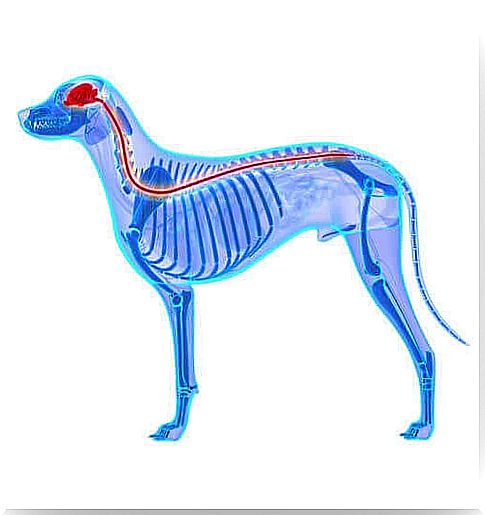
3. What about these receivers? They are to smell you better
The mammalian repertoire of olfactory receptors encompasses hundreds of different types of receptors. These specialized proteins are very diverse and are expressed in different subcompartments of the nose.
The dog’s nose is believed to have significantly more olfactory receptors than the human nose. It should be noted, however, that there are no reliable quantifications of what the limit of canine olfactory capacity is.
What is known is that the number of functional olfactory genes in humans is around 450, against more than 800 reported in dogs. A study of just two dogs estimated that canine sense of smell surpasses ours by four or five orders of magnitude. That means it would be 10,000 to 100,000 times sharper.
Even so, other scientific groups have recently tried to establish that there is no relationship between the number of olfactory genes in a species and the sensitivity of smell.
According to experts, comparing the dog’s olfactory ability to the sense of taste – by way of illustration – while a human being is able to notice a teaspoon of sugar in coffee, a dog can detect a teaspoon of sugar in a million liters of water, equivalent to the volume of two Olympic swimming pools.

4. The olfactory bulb is the “thinking” counterpart of the dog’s nose
Odoriferous substances bind to these olfactory receptors and generate a signal that is transmitted to the brain. The area of the brain that deciphers the signal triggered by odorous substances in the nose is the olfactory bulb. There we find, again, a difference between species.
It is known that the volume of the olfactory bulb in dogs and humans constitutes 0.31% and 0.01%, respectively, in relation to the brain volume.
5. Moisture in the dog’s nose is essential
Dogs’ noses secrete a thin layer of mucus, which always leaves them moist. This mucus helps to efficiently absorb and capture odorous molecules.
Dogs constantly lick their noses to smell the scents through their mouths… So it’s no wonder they smell everything before eating!
6. Dogs Smell in 3-D
Dogs can sniff separately with each nostril. It is known that a dog’s brain uses the different olfactory profiles of each nostril and, from them, determines exactly where the smell comes from.
This is similar to our vision. Each eye forms its own – slightly different – image of the world, which the brain processes to produce the three-dimensional image we record.
In short, the dog’s nose is vital to survival and reproduction. Recognizing a multitude of odorous substances related to food, predators and mating partners is essential for your species.
Consequently, your sense of smell has the ability to detect and discriminate an almost unlimited number of chemical compounds. This is accomplished through an elaborate olfactory system composed of several chemosensory subsystems.

